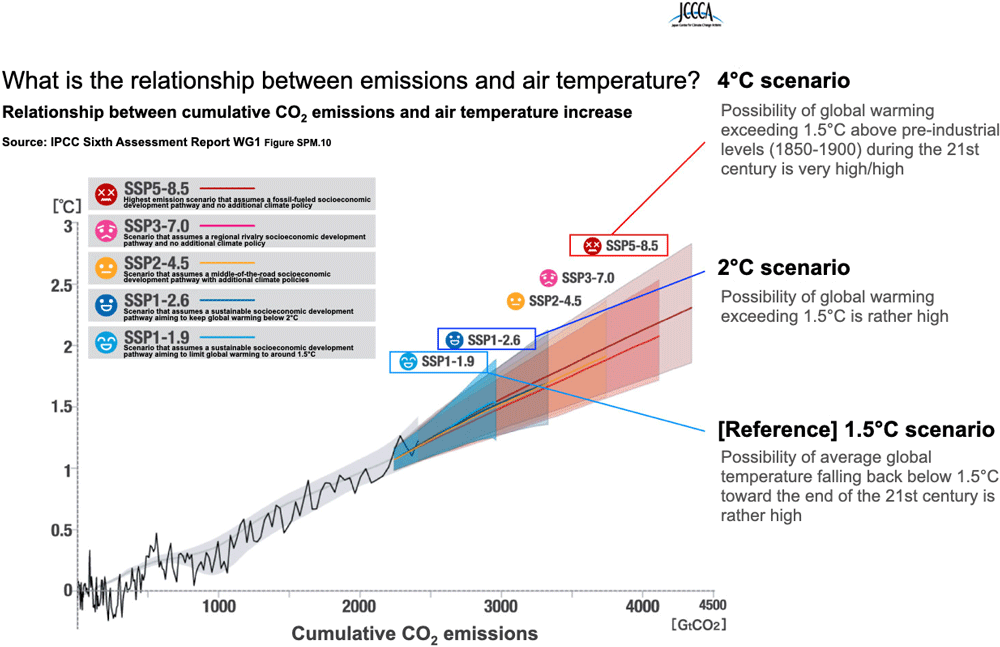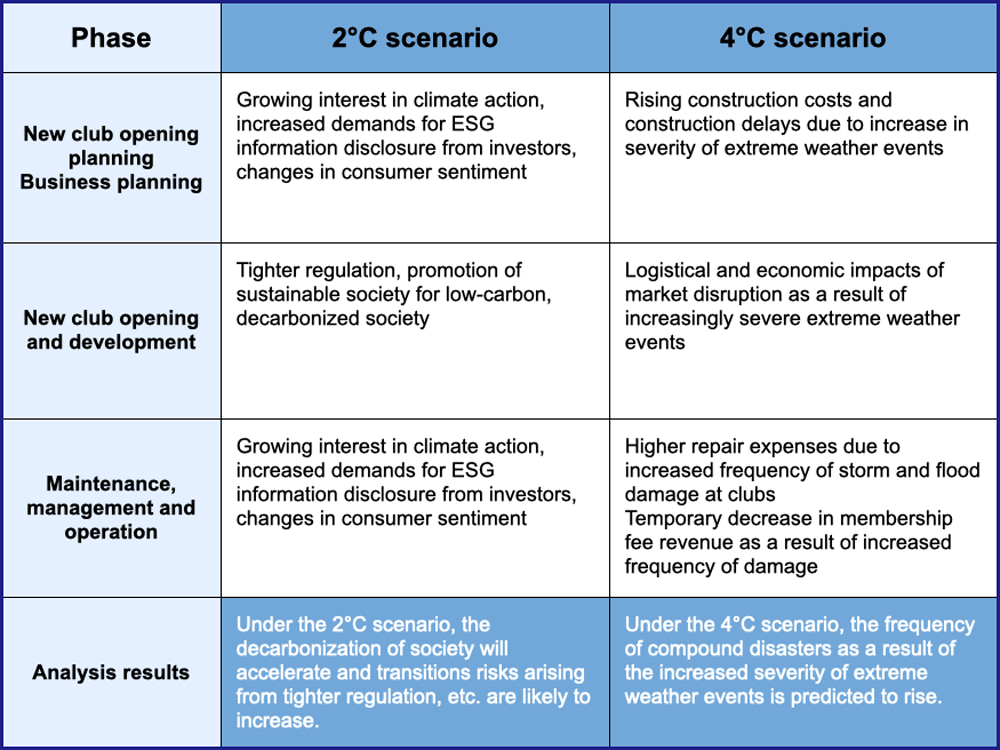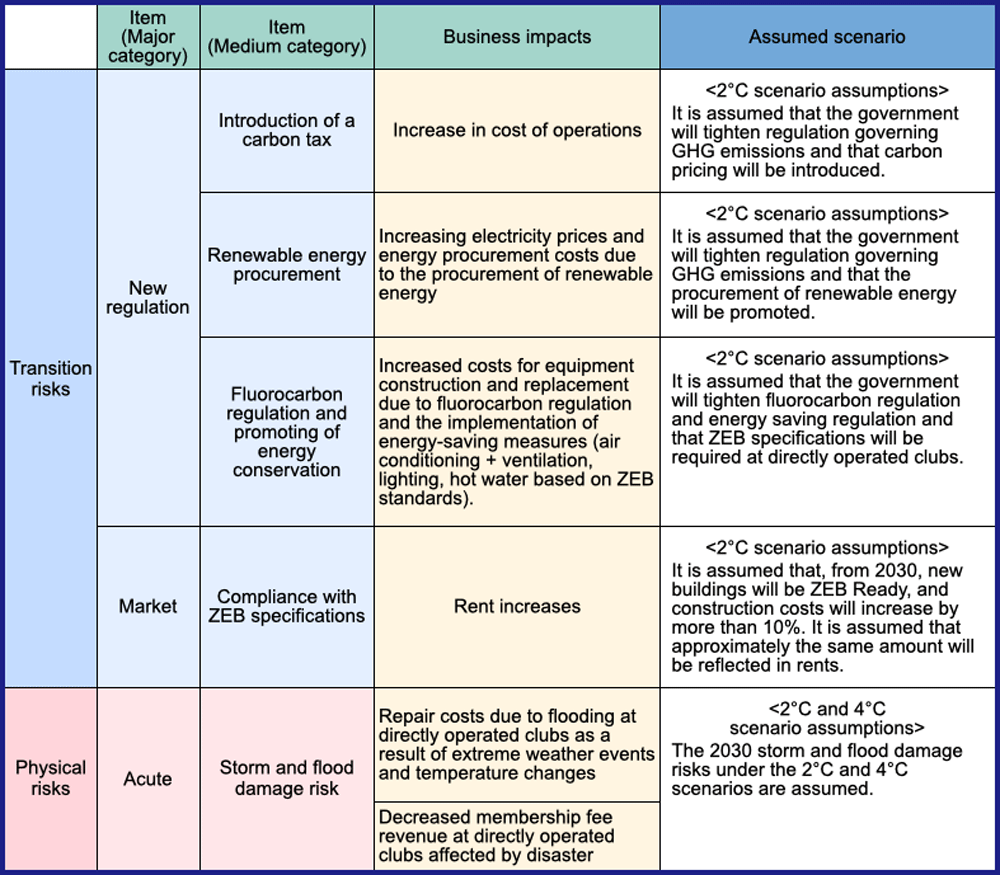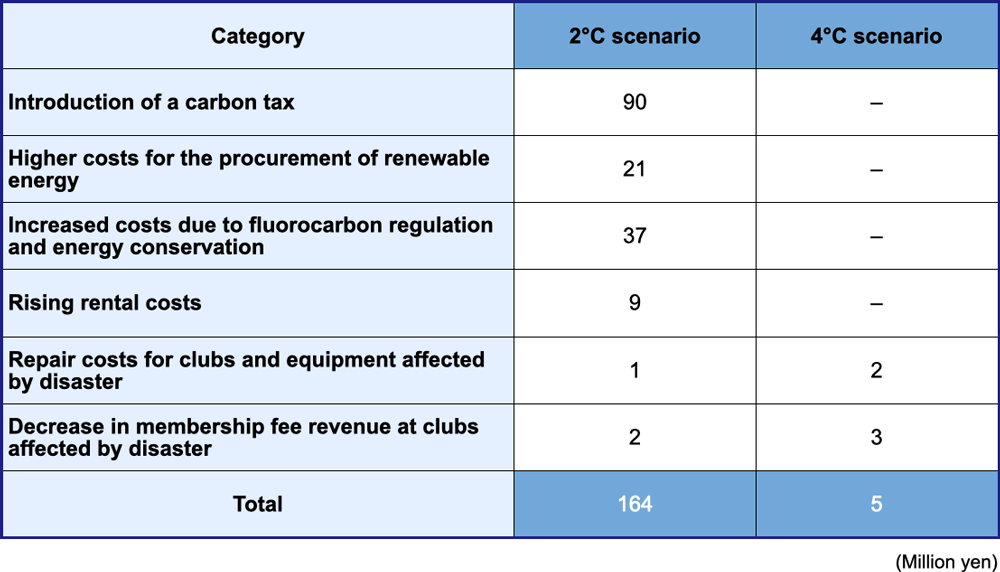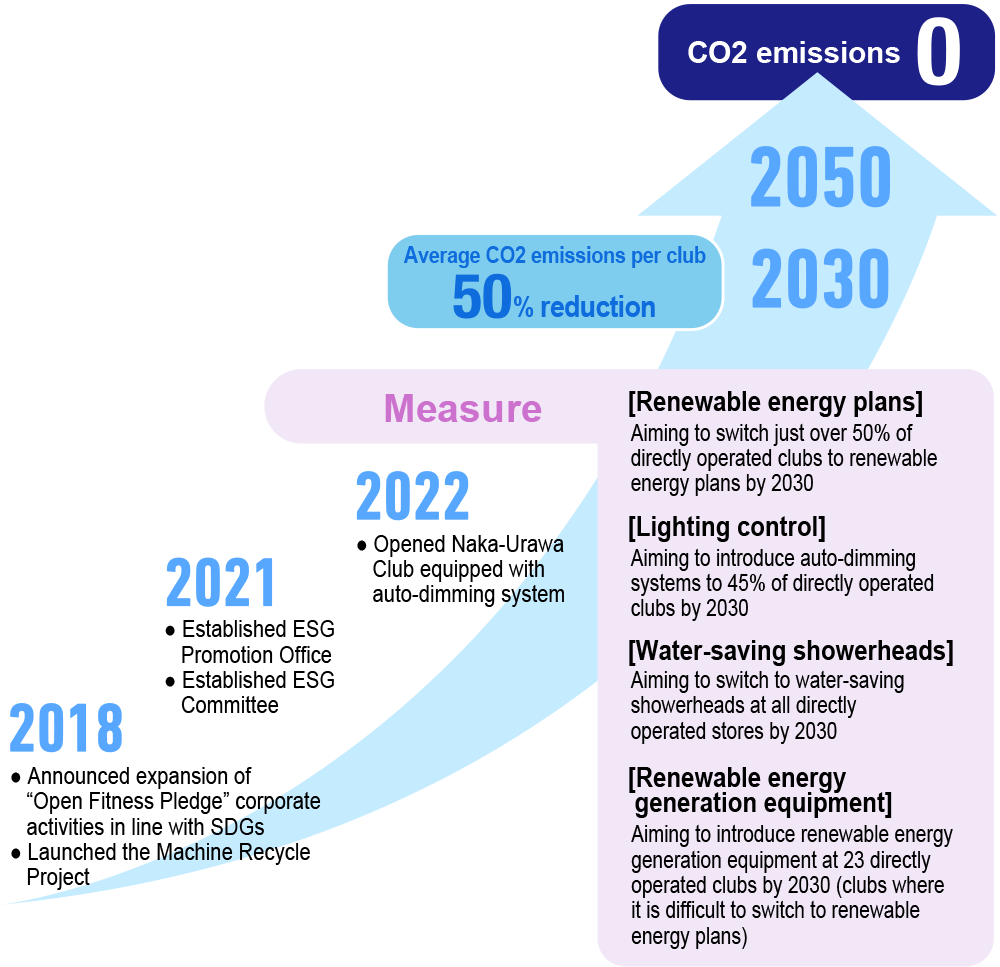Climate Change Initiatives and Information Disclosure Based on TCFD Recommendations
We regard climate change as an important management issue, and are actively working to combat climate change.
In consideration of the Paris Agreement’s long-term goals and the Japanese Government’s 2030 decarbonization targets, we are conducting climate change analyses and making appropriate information disclosures based on the recommendations of the TCFD (Task Force on Climate-related Financial Disclosures), including strengthening our governance structure, analyzing business impacts and setting CO2 reduction targets.
About TCFD
TCFD: The Task Force on Climate-related Financial Disclosures was established by the Financial Stability Board at the request of G20 to examine how climate-related information should be disclosed and how financial institutions should respond.
In June 2017, the TCFD published its final report recommending that companies and other entities disclose the following items of their climate-related risks and opportunities.
TCFD official website: https://www.fsb-tcfd.org/
【 Governance 】
We have built a framework for appropriate supervision of important climate change-related matters by the Board of Directors through the adoption of a structure for the deliberation and regular reporting of important climate related matters to the Board of Directors by the ESG Committee.
Chaired by the CEO and Representative Director, the ESG Committee reports and deliberates on important ESG-related issues we need to address.
In the fiscal year ended March 31, 2025, the ESG Committee met three times and held deliberations on climate change on all three occasions, sharing companywide issues and formulating action plans.
【 Strategy 】
We have identified “To be a source of infrastructure for community health and safety” as one of our materialities for implementing ESG management.
Action on climate change is an important challenge for achieving this materiality, and we are conducting climate change scenario analyses to understand the impact of climate change risks and opportunities, and setting climate targets such as energy-saving and CO2 emission reduction targets and managing progress against them.
●Overview of climate change scenario analyses
① 2℃ scenario and 4℃ scenario
We used two defined scenarios in our analysis: the 2℃ scenario and the 4℃ scenario.
We decided that the 1.5℃ scenario proposed as a Paris Agreement goal would be a subject for future analysis, based on the judgment that we do not currently collect enough data to identify a predicted worldview.
② Range of analysis
We decided that the range of calculations would be CO2 emissions (Scope 1 & Scope 2) from the burning of fuel or or use of electricity.
③ Scenario Analysis
Based on identified climate change risks, we performed scenario analyses and considered a 2030 worldview.
In our scenario analyses, we divided fitness club business operation into three phases: “new club opening planning and business planning,” “new club opening and development” and “maintenance, management and operation” and in March 2022, we analyzed possible scenarios in categories such as policy and legal, technology, market, and reputation risks and physical risks for both the 2℃ scenario and the 4℃ scenario.
Consider society in 2030 with two scenarios of climate change that are highly uncertain
Global warming accelerates as CO2 emissions increase
Global surface temperature increase since 1850–1900 (OC) as a function of cumulative CO2 emissions(GtCO2)
Near linear relationship between cumulative CO2 emissions and global warming to 2050 for five scenarios
Source) IPCC Sixth Assessment Report/From the website of Japan Center for Climate Change Actions(https://www.jccca.org/)
●Identified 2030 worldview
Analysis of climate-related risks and opportunities
●Analysis of risks and opportunities related to climate change
We gained an understanding of the risks and opportunities related to climate change predicted in the future in connection with our core fitness club operation business.
●Matters of high materiality based on identification of climate change-related risks and opportunities
* ZEB:
An abbreviation of Net Zero Energy Building. Building designed with the aim of achieving net zero annual primary energy consumption while maintaining a comfortable in-room environment through the introduction of high-efficiency equipment and renewable energy.
●Calculation of financial impact
Based on scenario analyses, we calculated the predicted financial impact in 2030.
Under the 2℃ scenario, the introduction of carbon tax, the increased cost of introducing renewable energy, and expenses for compliance with tighter fluorocarbon regulation are the main financial impacts, amounting to approximately 164 million yen in total.
Under the 4℃ scenario, in place of regulation, more frequent disasters are anticipated, with an estimated financial impact of around 5 million yen.
Based on the above analysis, we believe it is important to draw up future measures with emphasis on the 2℃ scenario, which would have a greater impact.
●Evaluation of 2030 financial impacts under the 2℃ scenario and the 4℃ scenario
【 Metrics and targets 】
① CO2 emission results (Scope 1 and Scope 2)
According to our calculations, Anytime Fitness emits on average 46.4 tonnes of CO2 annually per club.
Since our clubs do not have pools or spa facilities, our CO2 emissions are kept comparatively low compared with other fitness clubs.
(Comparison on a per square meter basis)
② Metrics and targets
Using the calculated CO2 emission results as a basis, we considered specific measures to reduce emissions from various perspectives. As a result, we set ourselves the target of achieving a 50% reduction in CO2 emissions per club by 2030 (compared with the fiscal year ended March 31, 2021).
③ CO2 emission results (Scope 1 and Scope 2) in the fiscal year ended March 31, 2024
CO2 emissions per club in the fiscal year ended March 31, 2024 were as follows.
Roadmap
We will steadily implement initiatives to achieve our decarbonization targets, including switching to renewable energy plans at directly operated clubs, saving electricity and water, and introducing renewable energy generation facilities.





